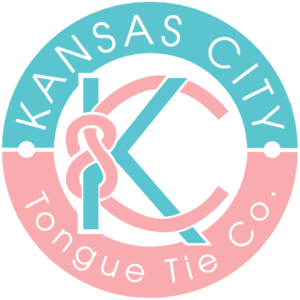The piece of tissue that is referred to as the “tie” is actually called a frenum or frenulum. When these pieces of tissues are too short, wide, or stuff, they can limit the mobility of the tongue or lip and result in dysfunction.
Lip ties and Tongue ties are congenital defects that can affect all ages of life.
KC Tongue Tie Co. offers a quick and effective procedure to release this tethered oral tissue in newborns, children, and beyond! Our practice is conveniently located in Lenexa, KS off of K-10 and Woodland Dr.
The release procedure, otherwise known as a “frenectomy” or “lip/tongue tie revision” is when the restricted tissue is cut to provide proper mobility of the tongue and/or lip.
Historically the procedure was completed with surgical scissors or a scalpel. At Kansas City Tongue Tie Co., we use an advanced technique that is more effective with less discomfort, minimal bleeding and improved healing. We use a CO2 soft tissue laser that can release the tethered oral tissue in about 15-20 seconds each.
We want our patients to be as comfortable as possible. We apply a topical anesthetic, with or without traditional local anesthetic injections, to the areas to help numb the area prior to the release.
While anesthesia is not needed to perform the tongue-tie or lip-tie correction, we do offer sedation options for kids, teens and adults. Infants do not need sedation – it is virtually painless for babies and it is safer not to use aesthesia. Our doctors will discuss the anesthesia options available for those concerned about holding still or discomfort.
Generally, the discomfort is minimal after a frenectomy. Over-the-counter pain medications can be used to relieve any discomfort.
Proper stretches are key to the success of the procedure. We want the wound to heal favorably and not back down into a restricted position. We will provide stretching exercises for your child to prevent reattachment or scar tissue formation. Older children and adults are generally required to work with an outside therapist to ensure proper exercises before and after the release for best results.
Lip and tongue movement take time to improve after a release. Some immediate improvement can be anticipated but the majority of improvement will come with time and relearning how to use the newly mobile lip and tongue.
